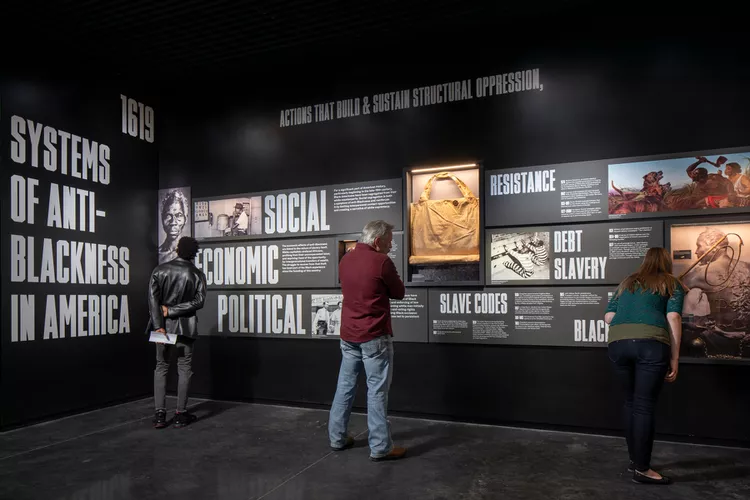New Museum Opens in Commemoration of the Tulsa Race Massacre
A brand-new museum commemorating the Tulsa Race Massacre of 1921 is officially open in Tulsa, Oklahoma.
Understanding the Significance of Greenwood Rising
Greenwood Rising, dedicated to educating the public about the Tulsa Race Massacre that occurred 100 years ago in the Greenwood District, opened its doors on August 4. This new museum utilizes history, technology, and interactive design to foster challenging conversations about the tragedy, while also discussing Black history and the heritage of historically Black North Tulsa and the Greenwood District specifically.
:max_bytes(150000):strip_icc():format(webp)/tulsa-greenwood-rising-commitment-space-GREENWOODOPEN0821-1324fa1e5cbd443abf94f27300d77db5.jpg)
The History of the Greenwood District
Prior to the catastrophic events of 1921, the Greenwood District was an affluent African-American community with a thriving business district known as “Black Wall Street.” White rioters brutally burned and looted the area between May 31 and June 1, 1921. Historians estimate that about 300 individuals were killed, over 800 were treated for injuries, and thousands were left homeless, according to the Tulsa Historical Society and Museum.
:max_bytes(150000):strip_icc():format(webp)/tulsa-greenwood-rising-exhibit-3-GREENWOODOPEN0821-b8df030aa00c496fadd1f80fb1379c45.jpg)
Exhibits Highlighting the Impact of the Massacre
Greenwood Rising features several thought-provoking exhibitions that facilitate a deeper understanding of the historical events, including:
- “The Greenwood Spirit”: Explores the early Greenwood community.
- “The Arc of Oppression”: Frames the 1921 Tulsa Race Massacre and its effects through the lens of anti-Blackness in America and systemic oppression.
- “Journey Toward Reconciliation”: An open space inviting all visitors to come together in the spirit of racial reconciliation and restorative justice.
:max_bytes(150000):strip_icc():format(webp)/tulsa-greenwood-rising-exhibit-1-GREENWOODOPEN0821-e50639fde2aa458abd9627324bac457e.jpg)
:max_bytes(150000):strip_icc():format(webp)/tulsa-greenwood-rising-exhibit-barbershop-GREENWOODOPEN0821-f134ec8d1c15471b91e0a45d597b200a.jpg)
Historic Artifacts on Display
Greenwood Rising partnered with design firm Local Projects to create this immersive space. In addition to the exhibitions, the museum showcases certain historic artifacts, including:
- Two unpublished manuscripts from non-Black witnesses of the 1921 Tulsa Race Massacre.
- A Coke machine and barber chair from Eaton’s Barbershop, historically significant as the headquarters for the Congress for Racial Equality (C.O.R.E.) during the Civil Rights era.
- The personal bible and other memorabilia from the late Reverend Ben Hill.
Plan Your Visit to Greenwood Rising
To experience this important cultural site, visitors must reserve timed tickets prior to their visit. Tickets for these time slots are complimentary to the public. For more information about the project, please visit the Greenwood Rising website.
Andrea Romano is a freelance writer in New York City. Follow her on Twitter @theandrearomano.




